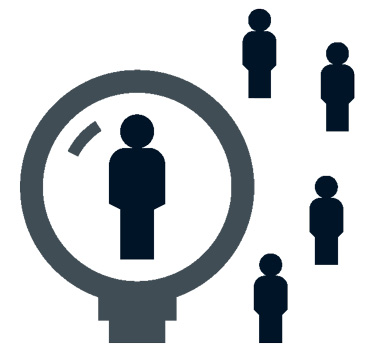Topic
Ferries
√ NY Agencies
New York City Economic Development Corporation (EDC)
NYCEDC oversees the development, operation, and maintenance of the NYC Ferry system. They are responsible for building new ferry landings, renovating existing ones, and managing contracts with ferry operators. NYCEDC contributes to the Mayor’s Management Report, providing data on ferry operations. Mayor’s Management Report
Department of Transportation (DOT)
The DOT regulates ferry operations within the city, ensuring that all ferries meet safety standards. According to the New York City Charter, the DOT has the authority to regulate public and private ferry operations originating or terminating within the city. Mayor’s Management Report
New York City Council Committee on Transportation
This committee oversees transportation policy and legislation, including issues related to ferry transportation.
Port Authority of New York and New Jersey
While not a city agency, the Port Authority operates several ferry services in the New York metropolitan area, including the NY Waterway ferry system.
√ Reports
NYC Ferry Sustainability Report 2021
This report outlines the sustainability efforts of NYC Ferry, including its use of renewable energy, its reduction of emissions, and its commitment to environmental stewardship.
Audit Report on the New York City Economic Development Corporation’s Administration of the NYC Ferry Operation
This audit found that EDC did not disclose over $224 million in expenditures as ferry-related in its audited financial statements and that EDC understated the City’s subsidy for the ferry operations.
NYC Ferries Reports and Statistics
On-time performance (OTP) is a measure of how often vessels are running on-time. Average daily ridership. Ridership by landing.
NYC Ferry Expansion Feasibility Study 2018-2019
An objective, data-driven analysis of expansion opportunities to inform policy decisions by the de Blasio administration. Source: EDC
NYC Ferry Survey
The New York City Department for the Aging publishes an annual report on diabetes services for older adults in the city. The report includes information on diabetes self-management education classes, nutrition counseling, and other services offered by the department.
NYC Ferry Sustainability Report 2021
This report outlines the sustainability efforts of NYC Ferry, including its use of renewable energy, its reduction of emissions, and its commitment to environmental stewardship.
Audit Report on the New York City Economic Development Corporation’s Administration of the NYC Ferry Operation
This audit found that EDC did not disclose over $224 million in expenditures as ferry-related in its audited financial statements and that EDC understated the City’s subsidy for the ferry operations.
NYC Ferries Reports and Statistics
On-time performance (OTP) is a measure of how often vessels are running on-time. Average daily ridership. Ridership by landing.
NYC Ferry Survey
The New York City Department for the Aging publishes an annual report on diabetes services for older adults in the city. The report includes information on diabetes self-management education classes, nutrition counseling, and other services offered by the department.
NYC Ferry Expansion Feasibility Study 2018-2019
An objective, data-driven analysis of expansion opportunities to inform policy decisions by the de Blasio administration. Source: EDC
√ Data sets
Reports & Statistics
New York City Ferry Service: This website is the official website of the NYC Ferry system. The Reports & Statistics page on this website provides quarterly reports and statistics on NYC Ferry ridership, on-time performance, and other metrics.
NYC DOT Data Feeds
This website is the website of the New York City Department of Transportation. The Data Feeds page on this website provides a list of data feeds that are available from NYC DOT, including data on ferries.
NYC Ferry Schedules
This website is the official website of the NYC Ferry system. The Vessel Schedules page on this website provides schedules for all of the NYC Ferry routes.
New York City Open Data
This dataset includes information on hourly NYC Ferry boardings by date, route, direction, ferry landing, and day of week. ‘Boardings’ are the total number of people who boarded a vessel during the time period in question. This data forms the basis of internal NYC Ferry ridership tasks to guide service planning.
√ Data visualizations
A map of NYC Ferry ridership by route
This map shows the number of people who boarded NYC ferries on each route in a given month. The map can be used to identify popular routes and to track ridership trends over time.
NYC Ferry – 2021 Survey Results
A line graph of NYC Ferry ridership over time: This line graph shows the number of people who boarded NYC ferries each month since the system launched in 2017. The graph can be used to see how ridership has grown over time and to identify any seasonal trends.
√ STATISTICS
As of 2019, ferries carried
million, annually, EDC
Staten island Ferry route
miles, DOT
number of NYC Ferry landings
EDC
Riders
As of 2019, ferry services in New York Harbor carried approximately 40 million people a year. Source: Ferry Plan
Staten Island Ferry
Routes
As of 2019, ferries carried
million, annually, EDC
Staten island Ferry route
miles, DOT
number of NYC Ferry landings
EDC
Riders
As of 2019, ferry services in New York Harbor carried approximately 40 million people a year. Source: Ferry Plan
Staten Island Ferry
Routes
√ Census & American Community Survey

Commuting Characteristics
Housing and Transportation Costs

